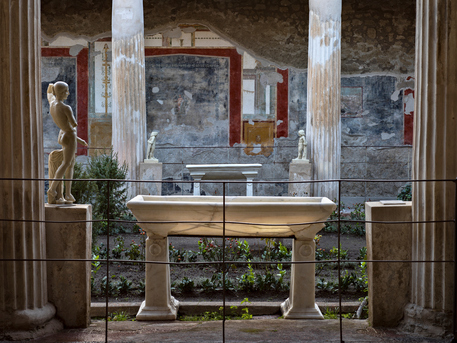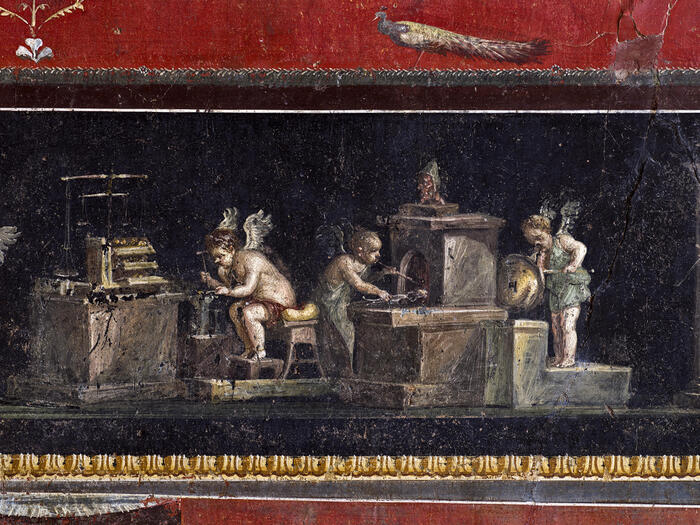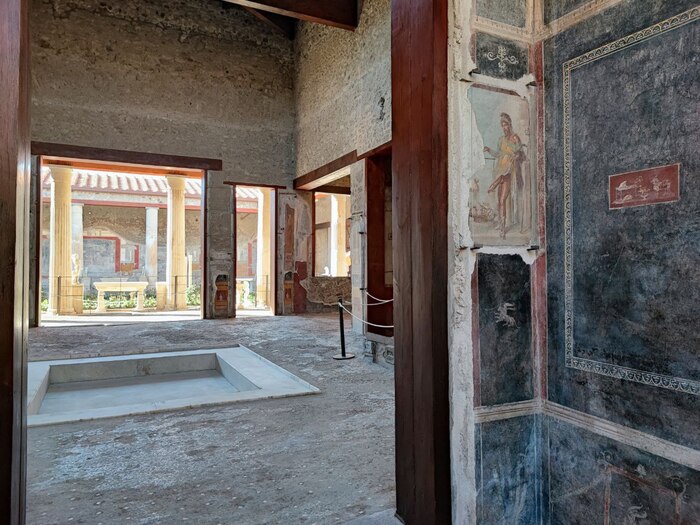On Tuesday, the House of Vettii, Domus Vettiorum in Latin, was being formally unveiled after 20 years of restoration. After decades of modern bureaucratic neglect, flooding and pillaging by thieves in search of artifacts to sell, this unveiling is delighting tourists and bringing fresh hope for more surprises still to come.
Experts are making tantalizing fresh insights into the everyday life of what is one of the most fascinating remnants of the ancient world.

“The House of the Vettii is like the history of Pompeii and actually of Roman society within one house,” Pompeii’s director, Gabriel Zuchtriegel, enthused as he showed off an area of the domus known as the Cupid Rooms last month.
One of Pompeii’s most famous and richest domus, which contains exceptional works of art and tells the story of the social ascent of two former slaves, opened its doors to visitors Wednesday, Jan. 11, 2023.
“So, you have this mixture: nature, architecture, art. But it is also a story about the social life of the Pompeiian society and actually the Roman world in this phase of history,” Zuchtriegel added.
Zuchtriegel ventured that the fresh “readings” of the revived fresco painting “reflect the dreams and imagination and anxieties of the owners because they lived between these images,” which include Greek mythological figures.

And who were these owners? The Vettis were two men — Aulus Vettius Conviva and Aulus Vettius Restitutus. In addition to having part of their names in common, they shared a common past — not as descendants of noble Roman families accustomed to opulence, but rather, Pompeii experts say, almost certainly, as once enslaved men who were later freed.
It is believed that they became wealthy through the wine trade. While some have hypothesized the two were brothers, there is no certainty about that. After years in slavery, the men “then had an incredible career after that and reached the highest ranks of local society, at least economically,” judging by their upscale domus and garden, Zuchtriegel said.
“They evidently tried to show their new status also through culture and through Greek mythological paintings, and it’s all about saying, ‘We’ve made it and so we are part of this elite’” of the Roman world.

Pompeii’s architect director of restoration work, Arianna Spinosa, called the restored home “one of the iconic houses of Pompeii. The residence “represents the Pompeiian domus par excellence, not only because of the frescoes of exceptional importance, but also because of its layout and architecture.”
First unearthed during archaeological excavations in the late 19th century, the domus was closed in 2002 for urgent restoration work, including shoring up roofing. After a partial reopening in 2016, it was closed again in 2020 for the final phase of the work, which included restoration of the frescoes and of the floor and colonnades.












